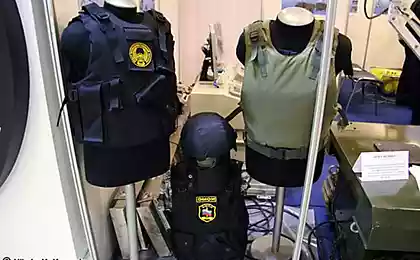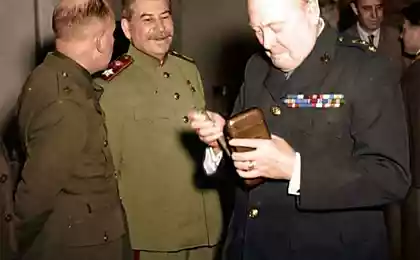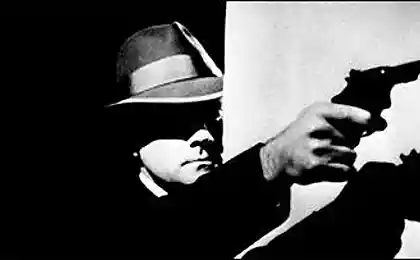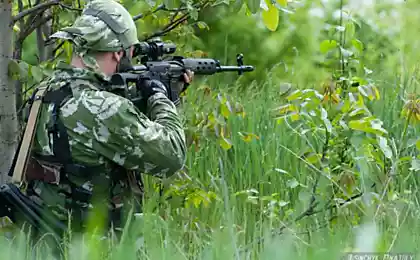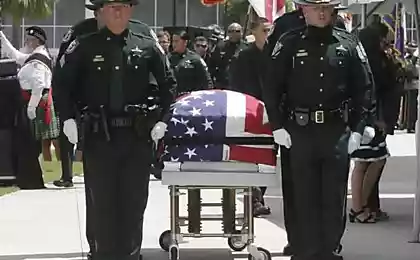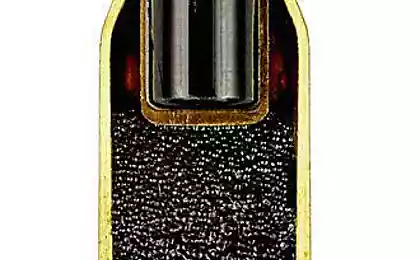1232
History vest
They do not publish militant screen, not sparkling polished to a mirror finish surface, they are decorated with plumes and embossed coat of arms - and often even disguised as a jacket.
But today without these unprepossessing-looking armor is simply unthinkable to send soldiers into battle or to provide minimum security VIP-persons ...
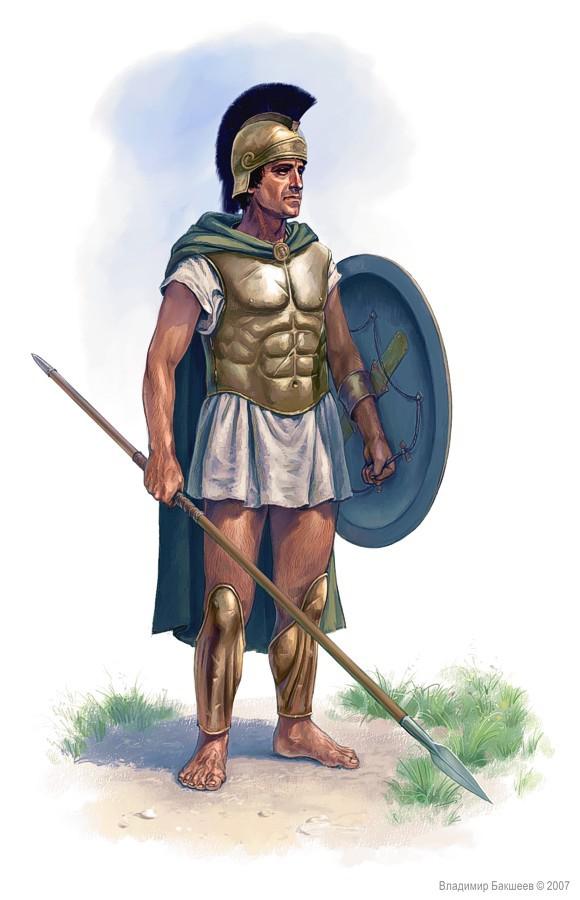
Who first came up with putting on the armor of war, to protect it from enemy killing blow is still a moot point.
In ancient times, the hoplites (ancient Greek heavily armed infantry) as Roman soldiers wore bronze cuirass, with breastplates these took the form of a muscular body, which in addition to aesthetic considerations and psychological impact on the enemy, could also reinforcing structure, as these changes play a role section improvised stiffeners.
On the strength of bronze at the time was clearly more effective than iron, due to its viscosity for the basics of metallurgy and properties of metals, humanity is only the beginning to comprehend fully, and steel plate armor were still fragile and unreliable.
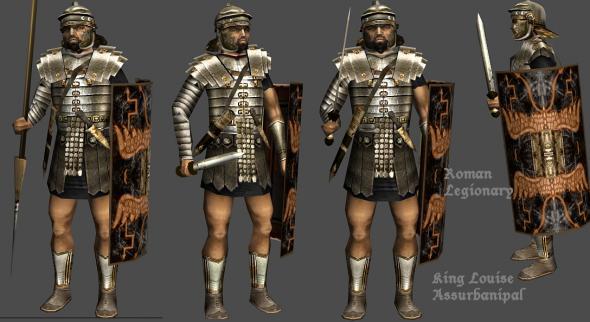
Bronze armor, including Solid cuirasses, were used in the Roman army until the beginning of our era. Lack of bronze was in its most expensive, according to this, in many respects, his victories Roman army was obliged superiority of its infantry bronezaschischennosti in relation to the enemy, who had no effective protection against the cold and throwing weapons.
The Fall of Rome and led to the demise of smithing.
In the Dark Ages the main and practically the only knight's armor was chain mail or scale.
She was not as effective as Breastplate, and quite difficult because of the weight, but still allows a certain extent, reduce the loss in the melee.
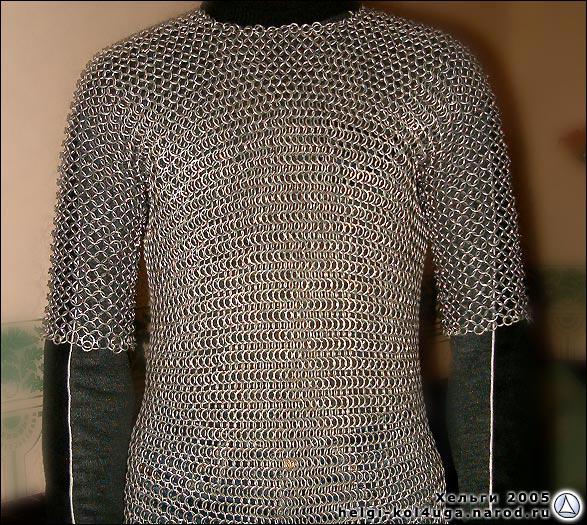
In the XIII century to strengthen the chain mail has been applied so-called "brigantine" made of metal plates lined shelved.
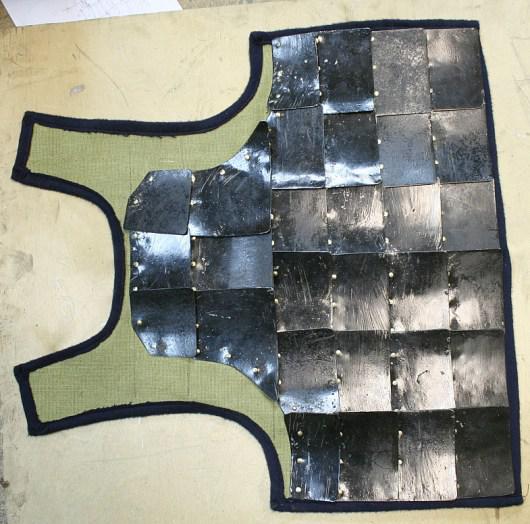
Brigantine something constructive to look like a modern body armor, but the quality of available then the materials used in their manufacture, can not effectively defend against direct, thrusting in close combat. By the end of the XIV century chain mail has become replaced by more effective armor, and the brigantine became the lot of poorer warriors make up light infantry and archers.
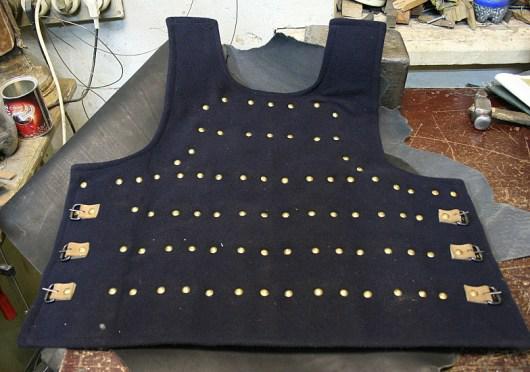
Some time is well protected by steel armor knightly cavalry was almost ideal means of addressing the outcome of any battle until its dominance on the battlefield does not put an end to firearms.
Heavy armor knight was powerless before the grapeshot and weighting only rarely bullet wounds - bullets and buckshot, breaking through the thin steel breastplate, going to take off, ricocheted from the armor, causing additional fatal wounds.
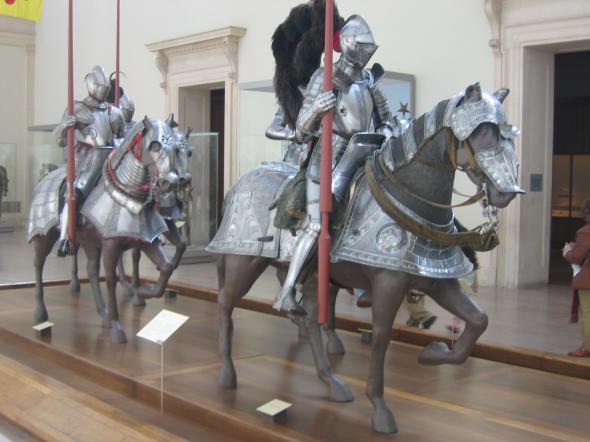
Out of this situation was one - due to the imperfection of firearms, connected with the pace and accuracy of fire, to save the situation could only speed and maneuverability of cavalry, which means that heavy armor clad knight, was already a burden.
Therefore, the main armored cavalry 16-17 century there was only Breastplate, led to the emergence of a new kind of horse-fighting units - cuirassiers and hussars, swift attack which is not uncommon breaketh the course of historical battles.
But with the improvement of military affairs and modernization of firearms, and this "reservation" was, after all, a burden.
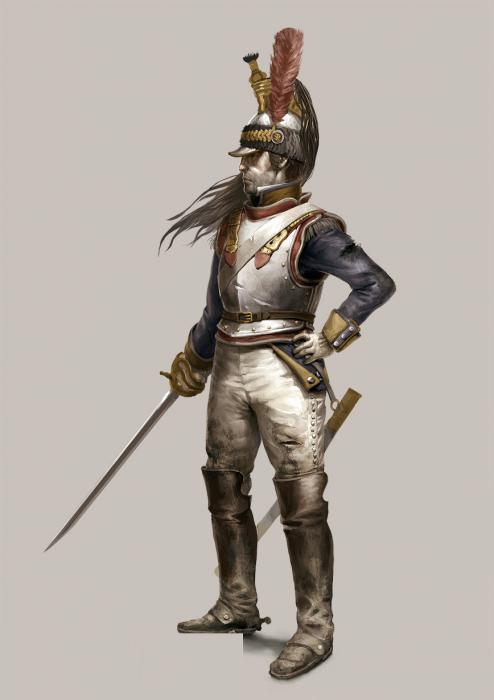
In the Russian army unjustly forgotten for several decades breastplate back only to 1812. January 1, 1812 followed by a royal decree on the manufacture for the cavalry of the safety equipment.
By July 1812 all cuirassier regiment received cuirasses new model, made of iron and covered with black paint.
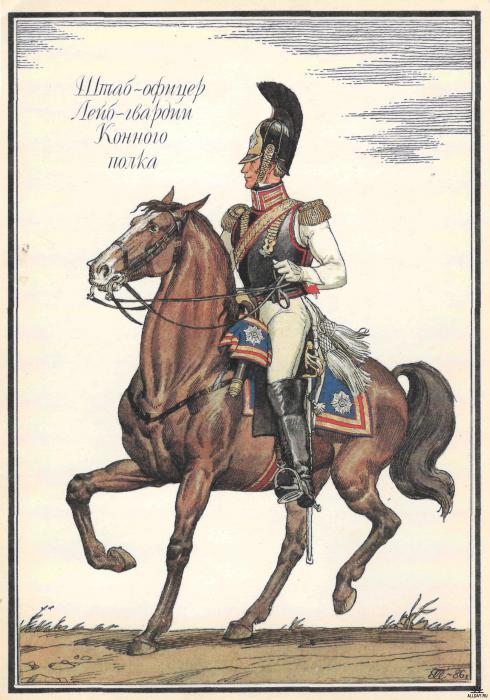
Breastplate consisted of two halves - the chest and back, fastened with two belts with brass tips, riveted to the dorsal half at the shoulders and fastened on the breast by two brass buttons.
In ordinary pomochnye these belts had iron scales, the officers - copper.
Along the edges Breastplate was besieged by a red cord, and the inside was lined in white linen, lined with cotton.
Naturally bullet such protection is not kept, but in the melee, melee or horse fray, this kind of armor was just necessary.
Later, with a reduction in the effectiveness of the protection Breastplate eventually remained in the army only as an element of formal attire.
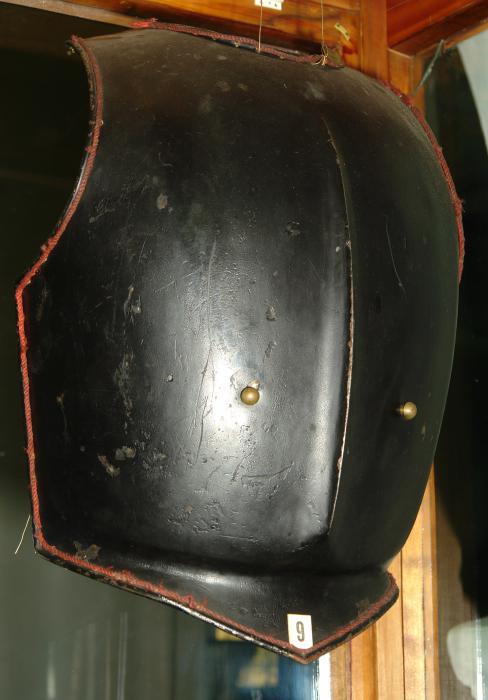
The outcome of the battle of Inkerman (1854), in which the Russian infantry shot as a target in a shooting gallery, and a staggering loss division Pikketa George (George Edward Pickett, 1825-1875) at the Battle of Gettysburg (Battle of Gettysburg, 1863), literally mowed fire northerners forced military leaders to think not only about changing the traditional battle tactics.
After breast soldier was protected from the deadly metal is only a thin cloth of his uniform. While the battle represented the exchange of musket volleys, followed by melee grind, it's not a major concern. But with the advent of high-velocity artillery, covered the battlefield shrapnel and fragmentation grenades, rapid-rifles, machine guns and then, losing armies grew enormously.
Generals different attitudes to the lives of its soldiers. Someone respected and shore them, someone considered an honorable death in battle for a real man, for someone soldiers were simply expendable. But all of them agree that excessive losses do not allow them to win the battle - and even lead to defeat. Especially vulnerable are the men going to attack infantry battalions and operating at the forefront of demining mouth - in which the enemy, and focus their main fire. Therefore, the idea to find a way to protect them at least.
"Harvest of Death". One of the most famous photographs of American photographer Timothy O'Sullivan (Timothy O'Sullivan, 1840-1882), made by him on the day of the Battle of Gettysburg.
Photo: Timothy H. O'Sullivan from the archives of the Library of Congress
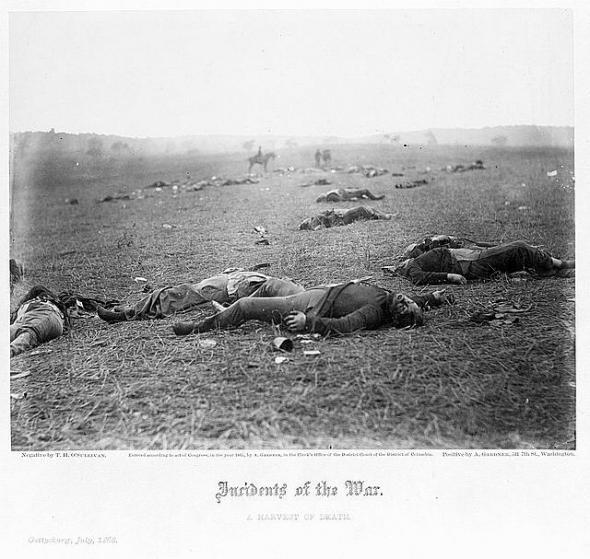
First on the battlefield tried to return the old reliable shield. In 1886 in Russia were tested steel shields design Colonel Fisher, with special windows for shooting. Alas, too thin, they were ineffective - as easily sweep of the new rifles. And the Japanese have used in the siege of Port Arthur steel shields British-made, there is another problem. With dimensions of 1 m at 0, 5 m and a sufficient thickness, these boards weighed 20 kg - so run with them in the attack was simply impossible. Subsequently, there was an idea to put such heavy shields on wheels, which was transformed into the creation of armored boxes, trolleys - climbing in which an infantryman move, pushing down. It was witty, but of little design as pushing a cart could only until the first obstacle.
Turned out to be another promising project - a return to the use of cuirass (armor). Fortunately, the idea was right before your eyes, since the turn of the XIX-XX centuries it was still part of the dress uniform cuirassier regiments. It turned out that even a simple Breastplate old model (designed to protect from cold steel) at a distance of a few tens of meters can withstand 7, 62-mm bullet from a revolver Nagant. Accordingly, some of its thickening (to a reasonable extent) could protect the person and of something more powerful.
Since the revival of cuirasses. It should be noted that Japanese boards Russia responded with an order for his army of 100 thousand infantry cuirasses from the French company "Simone Geslyuen and K". However, the goods delivered proved worthless. Whether the company cheated, then we say the interest of Paris in defeat Russian - which caused him even more tying-Russian debt bondage to French banks.
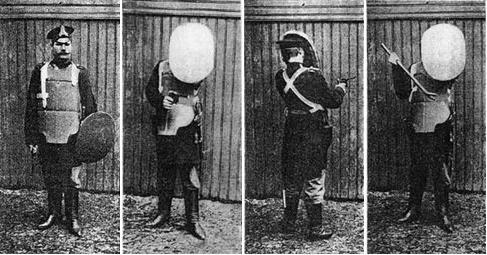
Were reliable protection of national construction. Among the best known of the author, Lieutenant Colonel AA Chemerzin who manufactured Breastplate he developed as various steel alloys. This talented man without a doubt be called the father of the Russian body armor.
"Catalogue of shells, invented by Lieutenant Colonel AA Chemerzinym" - so called booklet, printed, and sewn in one of the files stored in the Central State Military History Archives. It provides the following information: "The weight of shells: the lightest 11.2 pounds (lb - 409, 5 g), the heaviest 8 pounds. Invisible under clothing. Shells against bullets, with no punches 3-line military rifle, have a weight of 8 pounds. Shells cover the heart, lungs, abdomen, both hips, spine and back against the lungs and heart. Neprobivaemost each shell firing checked in the presence of the buyer ».
In the "Catalogue" are some acts shells tests conducted in 1905-1907. One of them said: "In the presence of His Imperial Majesty Sovereign Emperor June 11, 1905 in Oranienbaum made shooting a machine gun company. Shot from 8 guns on the shell of an alloy invented by Lieutenant Colonel Chemerzinym, from a distance of 300 paces. In the shell got 36 bullets. Carapace was not broken, and there were no cracks. At present the entire test variable composition Infantry School ».
Shield shell that society works "Sormovo" offered during the First World War.
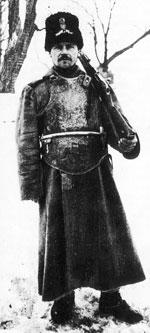
Shells were also tested in the reserve of the Moscow Metropolitan Police, commissioned by which they were made. Shooting them was carried out at a distance of 15 steps. Shells, as noted in the act, "turned out to be impenetrable, and bullet fragments not given. The first batch was made very satisfactory ».
In an act of commission reserves the St. Petersburg Metropolitan Police said: "The test gave the following results: when shooting in the chest and spinal shells covered with fine silk cloth, weighing 4 pounds the first 75 spools (spool - 4, 26 g) and the second 5 pounds 18 spools covering the chest, abdomen, hips and back, the bullet (Browning), breaking the matter, deformed and produce a recess in the shell, but that does not penetrate, remaining between matter and shelled, and no bullet fragments out does not take off ».
By the beginning of the First World cuirasses in Russia came into vogue. They outfitted the Metropolitan Police - to protect against bullets and knives criminals revolutionaries. Several thousand were sent to the army. Breastplate hidden (under clothing) and are interested in carrying civilians, who feared an armed robbery - despite the high prices (from 1500 to 8000 rubles). Alas, with the first demand for these prototypes civilian body armor were the first and rogues to use it. Promising that their goods and shoot a machine gun, they sold cuirass, which put it mildly, does not stand up to any test.
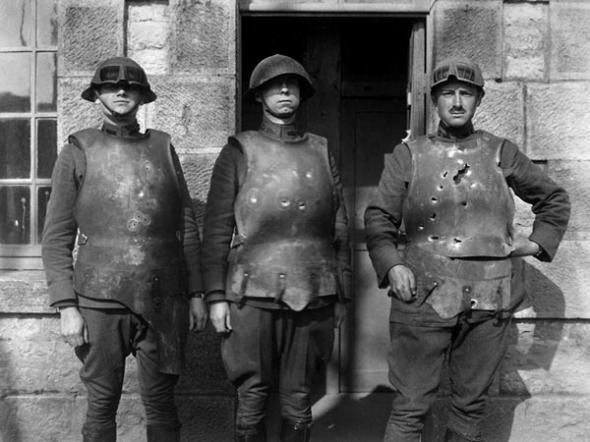
In the early days of 1918 artillery technical management of France to carry out tests at the site of the old cuirasses Fort de la Peña.
Shelter metal armor soldiers shot pistol, rifle and machine gun with quite encouraging results. Photo: Army Ordnance Dept
With the outbreak of World War II, cuirasses and similar remedies used not only Russia but also other countries.
The US Army experimented with the armor for troops on the Western Front
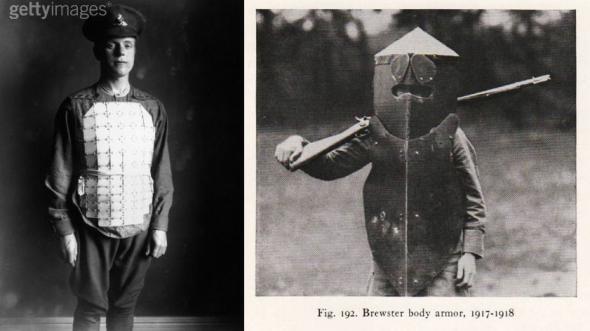
In the German army helmets used with special add-on armor. With studs additional protection to the standard German helmet cause the opponent to a malevolent judgments about the "horned" the Kaiser's army, while the product itself, though protected from the direct hit of a bullet, but just could not stand the energy of the bullet hitting the cervical vertebrae soldier, making a fatal hit anyway.
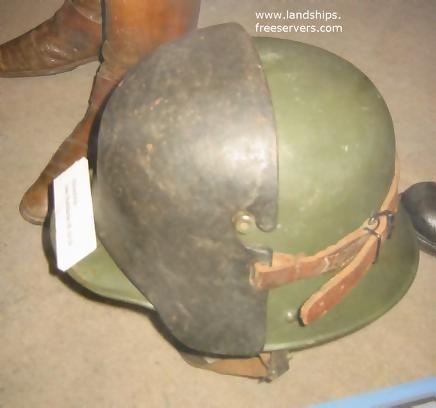
Checking the other elements in the armor showed their advantages and disadvantages.
Of course, it was a good protection of the body - with its vital organs.
However, the resistance depended on the breastplate of its thickness.
Too thin and light completely protected from the standard rifle bullets and large fragments, the thicker is weighed so much that fight it becomes impossible.
German "body armor" 1916
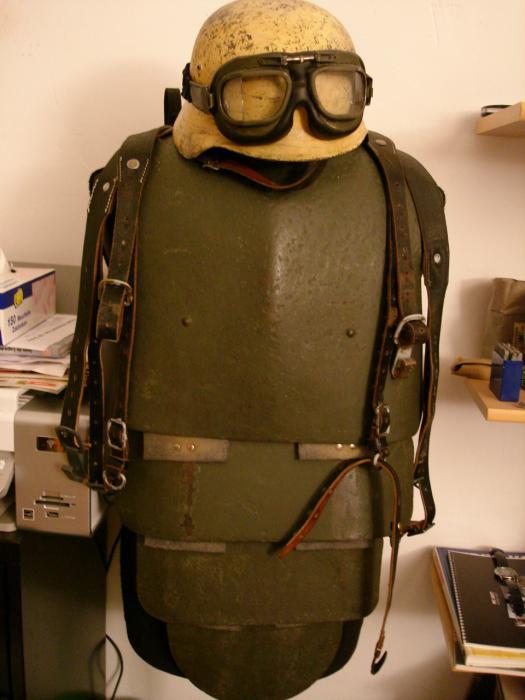
However, research in the field of personal bronezaschischennosti infantry, were not limited to the end of the First World War.
Creation of the Italian military thought WWI
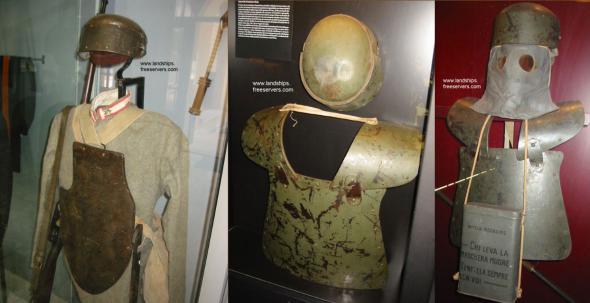
Relatively successful compromise was found in 1938, when the Red Army entered in service the first experimental steel breastplate CH-38 (CH-1).
As the name implies, it protected the soldier only the front (chest, abdomen and groin). By saving on the Protection of the back have the opportunity to increase the thickness of the steel sheet, without overloading too fighter.
But all the weaknesses of this solution proved to be during the Finnish company, and in 1941 started the development and production of Chest CH-42 (CH-2).
Its creator was armor laboratory of the Institute of Metals (TSNIIM) under the direction of MI Koryukova - one of the authors of the famous Soviet helmets, was in service until now.
Steel bib CH-38 (CH-1)
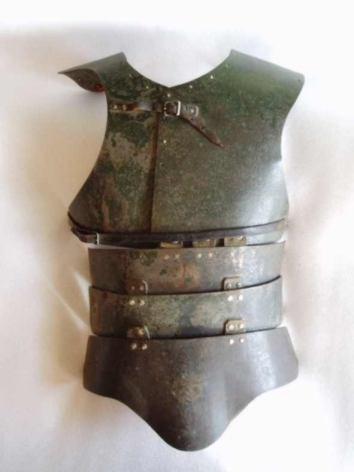
SN-42 consisted of two plates with thickness of three millimeters, the top and bottom - as in the whole bib soldiers could not have not to bend or crouch. It is well protected from the fragments of gunfire (at a distance of over 100 meters), although not withstand a shot from a rifle or machine gun. First of all, they were equipped with the Army Special Forces Group - Assault Engineering Sapper Brigade (ShISBr). They were used for the most severe areas: taking strong fortifications, street fighting. At the front, they were called "armor-clad infantry" and the comic "crayfish».
This "shell" soldiers typically worn on the sleeve detached from the jacket, which served as an additional cushion, in spite of the fact that the inner side of the bib had a special lining. But there are times when the "armor" worn on top of camouflage, as well as top overcoat.
In the opinion of veterans such assessment Chest was the most controversial - of good reviews to complete rejection.
But after analyzing the combat path of "experts" come to the following paradox: bib was valuable in the assault units, which "took" the major cities, and the negative reviews were mostly from parts that captured field fortifications. "Armor" protected the chest from bullets and shrapnel, while soldiers walked or ran, and in the melee, so it was no longer needed in the street battles.
However, field engineers, more stormtroopers moved on their bellies, and then a steel breastplate becomes absolutely unnecessary hindrance. In parts, which fought on the sparsely populated areas, these bibs moved first to the battalion, and then at the brigade warehouses.
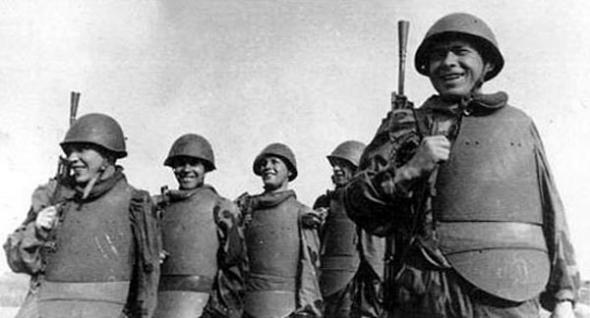
In 1942 he was tested broneschitok size 560h450 mm, made of 4 mm steel.
It is usually worn on the belt behind your back, and in a combat situation arrows put it in front of him and into the appropriate slot insert rifle.
Remained fragmentary information about the so-called "soldier's armor" - 5-mm steel sheet Dimensions 700h1000 mm and weighing 20-25 kg, with inward curved edges and again bore rifle.
Used these devices observers and snipers.
In 1946 he entered into service CH-46, the last steel breastplate.
Its thickness was increased to 5 mm, which can withstand all of the machine such as PCA or MR-40 at a distance of 25 m, and for added convenience, a fighter he was in three parts.
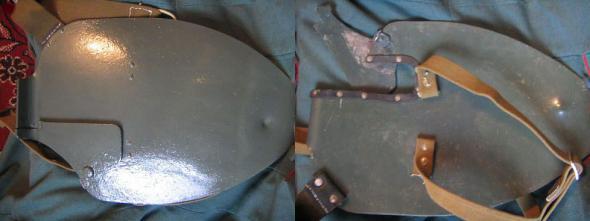
Steel Breastplate had three drawbacks: a lot of weight, discomfort when moving and when the bullet hit - Chips shards of steel and lead spray, injuring its owner.
Get rid of them managed through the use of the material of the fabric of strong synthetic fibers.
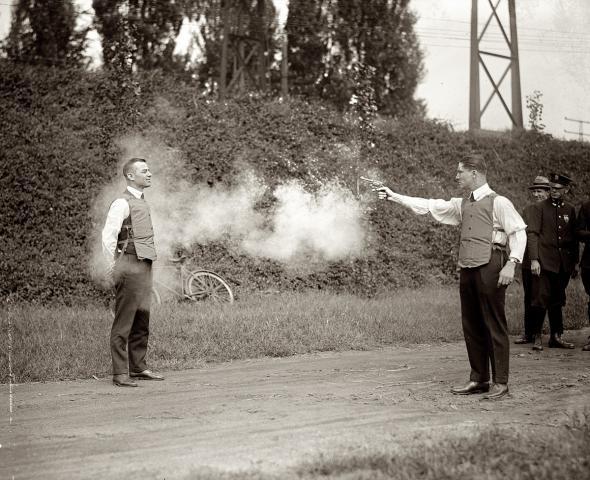
One of the first new remedy created Americans.
During the Korean War, they have provided their soldiers laminated nylon jackets.
There were several species (M-1951, M-1952, M-12 et al.), And some have cut most of this vest - zip up front. Against the bullets they were powerless, and in general were originally intended to protect the crews of military equipment from small fragments. That's why they closed the soldiers only from the waist up.
Somewhat later began issuing body armor and the soldiers who fought in "their two" (ie infantry).
To do this, they extended and added protective collars.
In addition, to enhance the protection, body armor were placed inside (sew or invest in special pockets) metal plates.
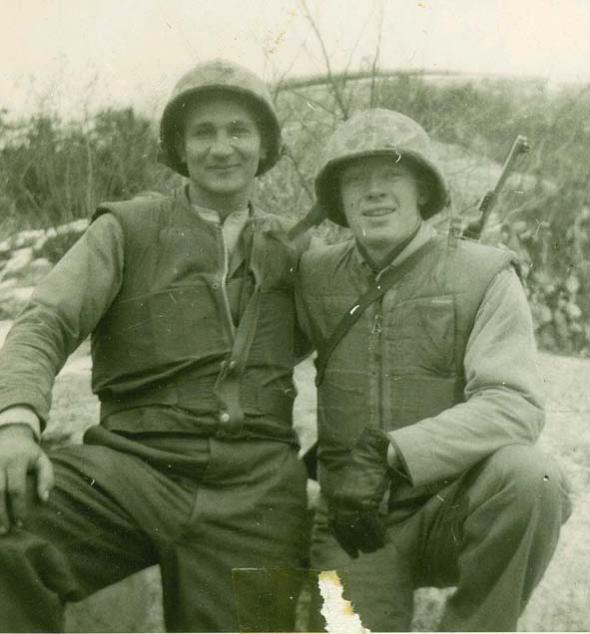
With these vests United States entered the Vietnam War.
Analysis of loss of the American army showed that 70-75% of injuries are shrapnel, with the majority - in the trunk.
For them it was decided to reduce the polls put the infantry in body armor that saved many American soldiers and officers from his wounds, and even from death.
the ones.
And here's why.
Source:
But today without these unprepossessing-looking armor is simply unthinkable to send soldiers into battle or to provide minimum security VIP-persons ...

Who first came up with putting on the armor of war, to protect it from enemy killing blow is still a moot point.
In ancient times, the hoplites (ancient Greek heavily armed infantry) as Roman soldiers wore bronze cuirass, with breastplates these took the form of a muscular body, which in addition to aesthetic considerations and psychological impact on the enemy, could also reinforcing structure, as these changes play a role section improvised stiffeners.
On the strength of bronze at the time was clearly more effective than iron, due to its viscosity for the basics of metallurgy and properties of metals, humanity is only the beginning to comprehend fully, and steel plate armor were still fragile and unreliable.

Bronze armor, including Solid cuirasses, were used in the Roman army until the beginning of our era. Lack of bronze was in its most expensive, according to this, in many respects, his victories Roman army was obliged superiority of its infantry bronezaschischennosti in relation to the enemy, who had no effective protection against the cold and throwing weapons.
The Fall of Rome and led to the demise of smithing.
In the Dark Ages the main and practically the only knight's armor was chain mail or scale.
She was not as effective as Breastplate, and quite difficult because of the weight, but still allows a certain extent, reduce the loss in the melee.

In the XIII century to strengthen the chain mail has been applied so-called "brigantine" made of metal plates lined shelved.

Brigantine something constructive to look like a modern body armor, but the quality of available then the materials used in their manufacture, can not effectively defend against direct, thrusting in close combat. By the end of the XIV century chain mail has become replaced by more effective armor, and the brigantine became the lot of poorer warriors make up light infantry and archers.

Some time is well protected by steel armor knightly cavalry was almost ideal means of addressing the outcome of any battle until its dominance on the battlefield does not put an end to firearms.
Heavy armor knight was powerless before the grapeshot and weighting only rarely bullet wounds - bullets and buckshot, breaking through the thin steel breastplate, going to take off, ricocheted from the armor, causing additional fatal wounds.

Out of this situation was one - due to the imperfection of firearms, connected with the pace and accuracy of fire, to save the situation could only speed and maneuverability of cavalry, which means that heavy armor clad knight, was already a burden.
Therefore, the main armored cavalry 16-17 century there was only Breastplate, led to the emergence of a new kind of horse-fighting units - cuirassiers and hussars, swift attack which is not uncommon breaketh the course of historical battles.
But with the improvement of military affairs and modernization of firearms, and this "reservation" was, after all, a burden.

In the Russian army unjustly forgotten for several decades breastplate back only to 1812. January 1, 1812 followed by a royal decree on the manufacture for the cavalry of the safety equipment.
By July 1812 all cuirassier regiment received cuirasses new model, made of iron and covered with black paint.

Breastplate consisted of two halves - the chest and back, fastened with two belts with brass tips, riveted to the dorsal half at the shoulders and fastened on the breast by two brass buttons.
In ordinary pomochnye these belts had iron scales, the officers - copper.
Along the edges Breastplate was besieged by a red cord, and the inside was lined in white linen, lined with cotton.
Naturally bullet such protection is not kept, but in the melee, melee or horse fray, this kind of armor was just necessary.
Later, with a reduction in the effectiveness of the protection Breastplate eventually remained in the army only as an element of formal attire.

The outcome of the battle of Inkerman (1854), in which the Russian infantry shot as a target in a shooting gallery, and a staggering loss division Pikketa George (George Edward Pickett, 1825-1875) at the Battle of Gettysburg (Battle of Gettysburg, 1863), literally mowed fire northerners forced military leaders to think not only about changing the traditional battle tactics.
After breast soldier was protected from the deadly metal is only a thin cloth of his uniform. While the battle represented the exchange of musket volleys, followed by melee grind, it's not a major concern. But with the advent of high-velocity artillery, covered the battlefield shrapnel and fragmentation grenades, rapid-rifles, machine guns and then, losing armies grew enormously.
Generals different attitudes to the lives of its soldiers. Someone respected and shore them, someone considered an honorable death in battle for a real man, for someone soldiers were simply expendable. But all of them agree that excessive losses do not allow them to win the battle - and even lead to defeat. Especially vulnerable are the men going to attack infantry battalions and operating at the forefront of demining mouth - in which the enemy, and focus their main fire. Therefore, the idea to find a way to protect them at least.
"Harvest of Death". One of the most famous photographs of American photographer Timothy O'Sullivan (Timothy O'Sullivan, 1840-1882), made by him on the day of the Battle of Gettysburg.
Photo: Timothy H. O'Sullivan from the archives of the Library of Congress

First on the battlefield tried to return the old reliable shield. In 1886 in Russia were tested steel shields design Colonel Fisher, with special windows for shooting. Alas, too thin, they were ineffective - as easily sweep of the new rifles. And the Japanese have used in the siege of Port Arthur steel shields British-made, there is another problem. With dimensions of 1 m at 0, 5 m and a sufficient thickness, these boards weighed 20 kg - so run with them in the attack was simply impossible. Subsequently, there was an idea to put such heavy shields on wheels, which was transformed into the creation of armored boxes, trolleys - climbing in which an infantryman move, pushing down. It was witty, but of little design as pushing a cart could only until the first obstacle.
Turned out to be another promising project - a return to the use of cuirass (armor). Fortunately, the idea was right before your eyes, since the turn of the XIX-XX centuries it was still part of the dress uniform cuirassier regiments. It turned out that even a simple Breastplate old model (designed to protect from cold steel) at a distance of a few tens of meters can withstand 7, 62-mm bullet from a revolver Nagant. Accordingly, some of its thickening (to a reasonable extent) could protect the person and of something more powerful.
Since the revival of cuirasses. It should be noted that Japanese boards Russia responded with an order for his army of 100 thousand infantry cuirasses from the French company "Simone Geslyuen and K". However, the goods delivered proved worthless. Whether the company cheated, then we say the interest of Paris in defeat Russian - which caused him even more tying-Russian debt bondage to French banks.

Were reliable protection of national construction. Among the best known of the author, Lieutenant Colonel AA Chemerzin who manufactured Breastplate he developed as various steel alloys. This talented man without a doubt be called the father of the Russian body armor.
"Catalogue of shells, invented by Lieutenant Colonel AA Chemerzinym" - so called booklet, printed, and sewn in one of the files stored in the Central State Military History Archives. It provides the following information: "The weight of shells: the lightest 11.2 pounds (lb - 409, 5 g), the heaviest 8 pounds. Invisible under clothing. Shells against bullets, with no punches 3-line military rifle, have a weight of 8 pounds. Shells cover the heart, lungs, abdomen, both hips, spine and back against the lungs and heart. Neprobivaemost each shell firing checked in the presence of the buyer ».
In the "Catalogue" are some acts shells tests conducted in 1905-1907. One of them said: "In the presence of His Imperial Majesty Sovereign Emperor June 11, 1905 in Oranienbaum made shooting a machine gun company. Shot from 8 guns on the shell of an alloy invented by Lieutenant Colonel Chemerzinym, from a distance of 300 paces. In the shell got 36 bullets. Carapace was not broken, and there were no cracks. At present the entire test variable composition Infantry School ».
Shield shell that society works "Sormovo" offered during the First World War.

Shells were also tested in the reserve of the Moscow Metropolitan Police, commissioned by which they were made. Shooting them was carried out at a distance of 15 steps. Shells, as noted in the act, "turned out to be impenetrable, and bullet fragments not given. The first batch was made very satisfactory ».
In an act of commission reserves the St. Petersburg Metropolitan Police said: "The test gave the following results: when shooting in the chest and spinal shells covered with fine silk cloth, weighing 4 pounds the first 75 spools (spool - 4, 26 g) and the second 5 pounds 18 spools covering the chest, abdomen, hips and back, the bullet (Browning), breaking the matter, deformed and produce a recess in the shell, but that does not penetrate, remaining between matter and shelled, and no bullet fragments out does not take off ».
By the beginning of the First World cuirasses in Russia came into vogue. They outfitted the Metropolitan Police - to protect against bullets and knives criminals revolutionaries. Several thousand were sent to the army. Breastplate hidden (under clothing) and are interested in carrying civilians, who feared an armed robbery - despite the high prices (from 1500 to 8000 rubles). Alas, with the first demand for these prototypes civilian body armor were the first and rogues to use it. Promising that their goods and shoot a machine gun, they sold cuirass, which put it mildly, does not stand up to any test.

In the early days of 1918 artillery technical management of France to carry out tests at the site of the old cuirasses Fort de la Peña.
Shelter metal armor soldiers shot pistol, rifle and machine gun with quite encouraging results. Photo: Army Ordnance Dept
With the outbreak of World War II, cuirasses and similar remedies used not only Russia but also other countries.
The US Army experimented with the armor for troops on the Western Front

In the German army helmets used with special add-on armor. With studs additional protection to the standard German helmet cause the opponent to a malevolent judgments about the "horned" the Kaiser's army, while the product itself, though protected from the direct hit of a bullet, but just could not stand the energy of the bullet hitting the cervical vertebrae soldier, making a fatal hit anyway.

Checking the other elements in the armor showed their advantages and disadvantages.
Of course, it was a good protection of the body - with its vital organs.
However, the resistance depended on the breastplate of its thickness.
Too thin and light completely protected from the standard rifle bullets and large fragments, the thicker is weighed so much that fight it becomes impossible.
German "body armor" 1916

However, research in the field of personal bronezaschischennosti infantry, were not limited to the end of the First World War.
Creation of the Italian military thought WWI

Relatively successful compromise was found in 1938, when the Red Army entered in service the first experimental steel breastplate CH-38 (CH-1).
As the name implies, it protected the soldier only the front (chest, abdomen and groin). By saving on the Protection of the back have the opportunity to increase the thickness of the steel sheet, without overloading too fighter.
But all the weaknesses of this solution proved to be during the Finnish company, and in 1941 started the development and production of Chest CH-42 (CH-2).
Its creator was armor laboratory of the Institute of Metals (TSNIIM) under the direction of MI Koryukova - one of the authors of the famous Soviet helmets, was in service until now.
Steel bib CH-38 (CH-1)

SN-42 consisted of two plates with thickness of three millimeters, the top and bottom - as in the whole bib soldiers could not have not to bend or crouch. It is well protected from the fragments of gunfire (at a distance of over 100 meters), although not withstand a shot from a rifle or machine gun. First of all, they were equipped with the Army Special Forces Group - Assault Engineering Sapper Brigade (ShISBr). They were used for the most severe areas: taking strong fortifications, street fighting. At the front, they were called "armor-clad infantry" and the comic "crayfish».
This "shell" soldiers typically worn on the sleeve detached from the jacket, which served as an additional cushion, in spite of the fact that the inner side of the bib had a special lining. But there are times when the "armor" worn on top of camouflage, as well as top overcoat.
In the opinion of veterans such assessment Chest was the most controversial - of good reviews to complete rejection.
But after analyzing the combat path of "experts" come to the following paradox: bib was valuable in the assault units, which "took" the major cities, and the negative reviews were mostly from parts that captured field fortifications. "Armor" protected the chest from bullets and shrapnel, while soldiers walked or ran, and in the melee, so it was no longer needed in the street battles.
However, field engineers, more stormtroopers moved on their bellies, and then a steel breastplate becomes absolutely unnecessary hindrance. In parts, which fought on the sparsely populated areas, these bibs moved first to the battalion, and then at the brigade warehouses.

In 1942 he was tested broneschitok size 560h450 mm, made of 4 mm steel.
It is usually worn on the belt behind your back, and in a combat situation arrows put it in front of him and into the appropriate slot insert rifle.
Remained fragmentary information about the so-called "soldier's armor" - 5-mm steel sheet Dimensions 700h1000 mm and weighing 20-25 kg, with inward curved edges and again bore rifle.
Used these devices observers and snipers.
In 1946 he entered into service CH-46, the last steel breastplate.
Its thickness was increased to 5 mm, which can withstand all of the machine such as PCA or MR-40 at a distance of 25 m, and for added convenience, a fighter he was in three parts.

Steel Breastplate had three drawbacks: a lot of weight, discomfort when moving and when the bullet hit - Chips shards of steel and lead spray, injuring its owner.
Get rid of them managed through the use of the material of the fabric of strong synthetic fibers.

One of the first new remedy created Americans.
During the Korean War, they have provided their soldiers laminated nylon jackets.
There were several species (M-1951, M-1952, M-12 et al.), And some have cut most of this vest - zip up front. Against the bullets they were powerless, and in general were originally intended to protect the crews of military equipment from small fragments. That's why they closed the soldiers only from the waist up.
Somewhat later began issuing body armor and the soldiers who fought in "their two" (ie infantry).
To do this, they extended and added protective collars.
In addition, to enhance the protection, body armor were placed inside (sew or invest in special pockets) metal plates.

With these vests United States entered the Vietnam War.
Analysis of loss of the American army showed that 70-75% of injuries are shrapnel, with the majority - in the trunk.
For them it was decided to reduce the polls put the infantry in body armor that saved many American soldiers and officers from his wounds, and even from death.
the ones.
And here's why.
Source:

